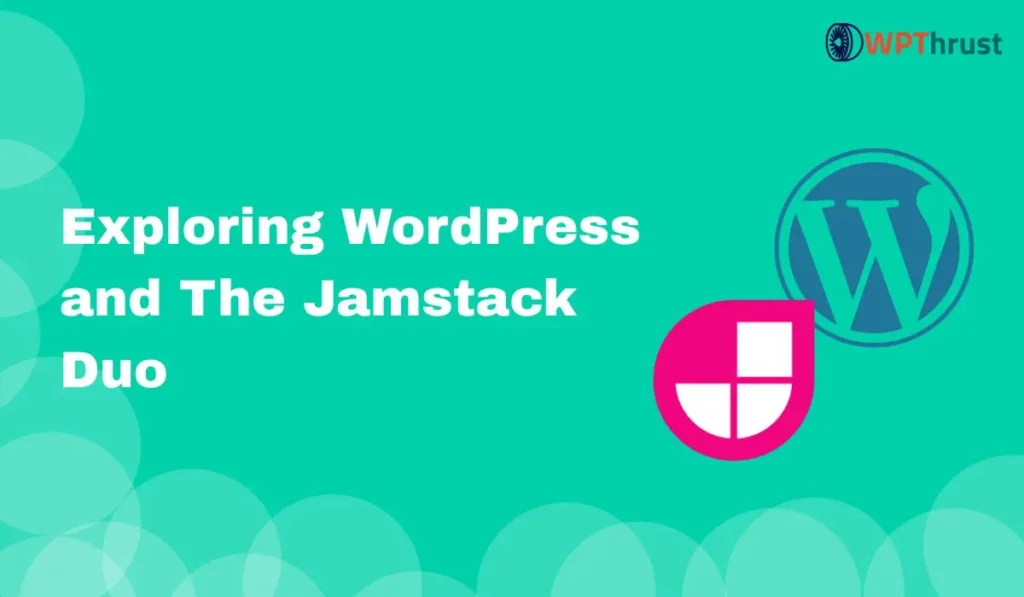Is your WordPress site feeling slow, vulnerable, or difficult to scale? For years, WordPress has been the top hub for web content, but with modern challenges, a new approach is required. Abandoning WordPress would not be the solution, but we need to empower it with the Jamstack, a cutting-edge web architecture. It’s not about WordPress vs Jamstack but how this powerful duo allows you to use WordPress as a familiar content engine while utilising the Jamstack for superior performance and security.
In this post, we will provide you with an overview of how the WordPress & Jamstack combination works. We will take a look at demystifying the Jamstack to repurposing your site as a headless CMS. Be ready to explore the tangible benefits and include lightning-fast page loads with improved security.
What is the Jamstack?
The Jamstack is a modern web development architecture that is mainly built on three core pillars: JavaScript, APIs, and Markup. You can consider it as a dynamic shift from traditional and server-dependent sites.
Instead of a setup where a server dynamically builds webpages for every visitor, Jamstack websites are pre-built into static HTML files, CSS, and JavaScript. This means the heavy lifting is done once, at the time of deployment, and not with every single page request.
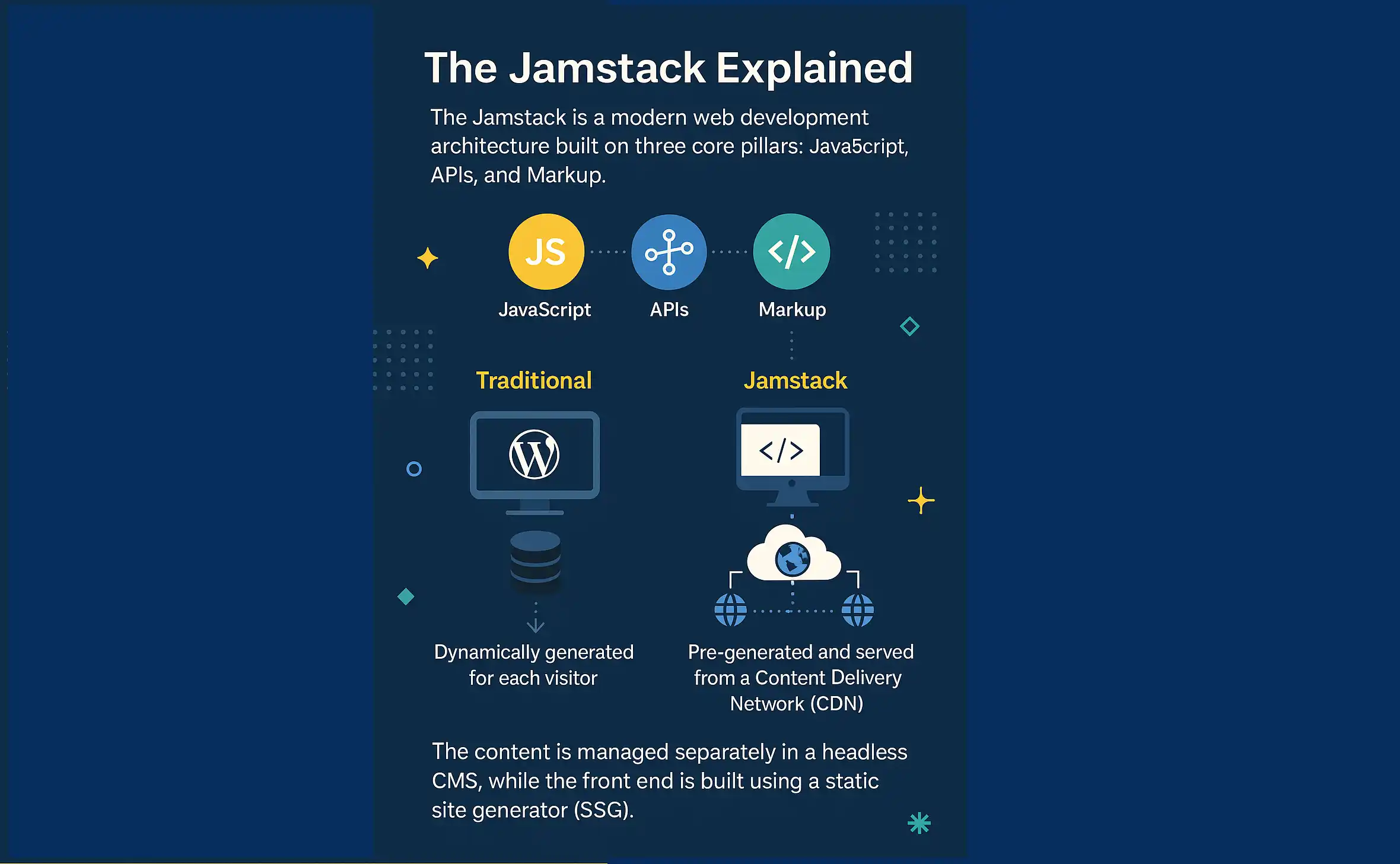
WordPress vs Jamstack Mystery
This “static” difference is crucial. A traditional WordPress site is dynamic; it queries a database, runs PHP code, and generates a page on the fly for each visitor. This process can be slow and resource-intensive.
Jamstack sites, by contrast, serve these pre-generated pages instantly from a Content Delivery Network (CDN), which is a global network of servers. The result is a website that loads at lightning speed, regardless of where your visitors are located. The content is managed separately in a headless CMS (like WordPress in our case), and the front end is built using a static site generator (SSG) such as Gatsby or Next.js, which connects to the CMS via an API to pull in the content.
WordPress as a Headless CMS
The question is, how does WordPress fit into the new model? It turns into a “headless” CMS to do that. In a traditional setup, WordPress acts as the body (the content, database, and back end) as well as the head (the theme and front end that visitors see) of any website. A headless CMS is a backend that exists without a frontend.
In this new architecture, WordPress continues to be a robust tool for content creation and management, but its responsibility ends there.
Now, we don’t use any WordPress themes to make that happen. Here, the content is accessed through an API. We know that WordPress comes with a powerful and built-in REST API. You can also prefer using a plugin like WPGraphQL for more flexible data queries.
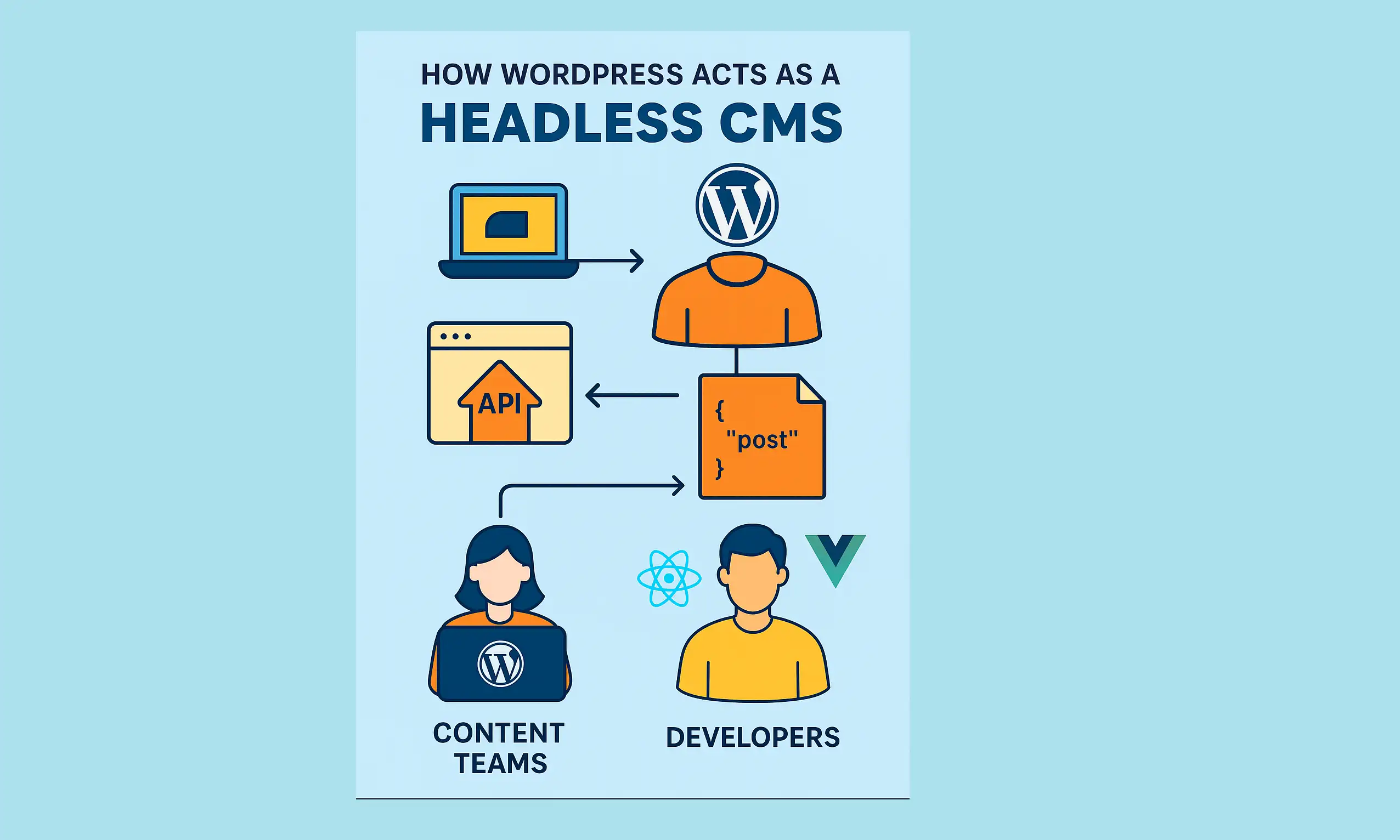
These APIs serve your content like posts, pages, and custom post types as structured data (typically JSON). A separate front-end application then fetches and displays that structured data.
This is a “best of both worlds” solution. Content teams can continue using the familiar and intuitive WordPress dashboard, which they know and love.
On the other hand, developers are free from the constraints of PHP templates. They can build a lightning-fast front end using their favorite modern tools and frameworks like React or Vue.js. That creates a beautiful and performance-based user experience.
Why Combine WordPress and Jamstack?
What’s the need to go through the trouble of combining these two systems when everyone is talking about the WordPress vs Jamstack battle? The benefits are exciting and directly impact the performance, security, and long-term viability of your website.
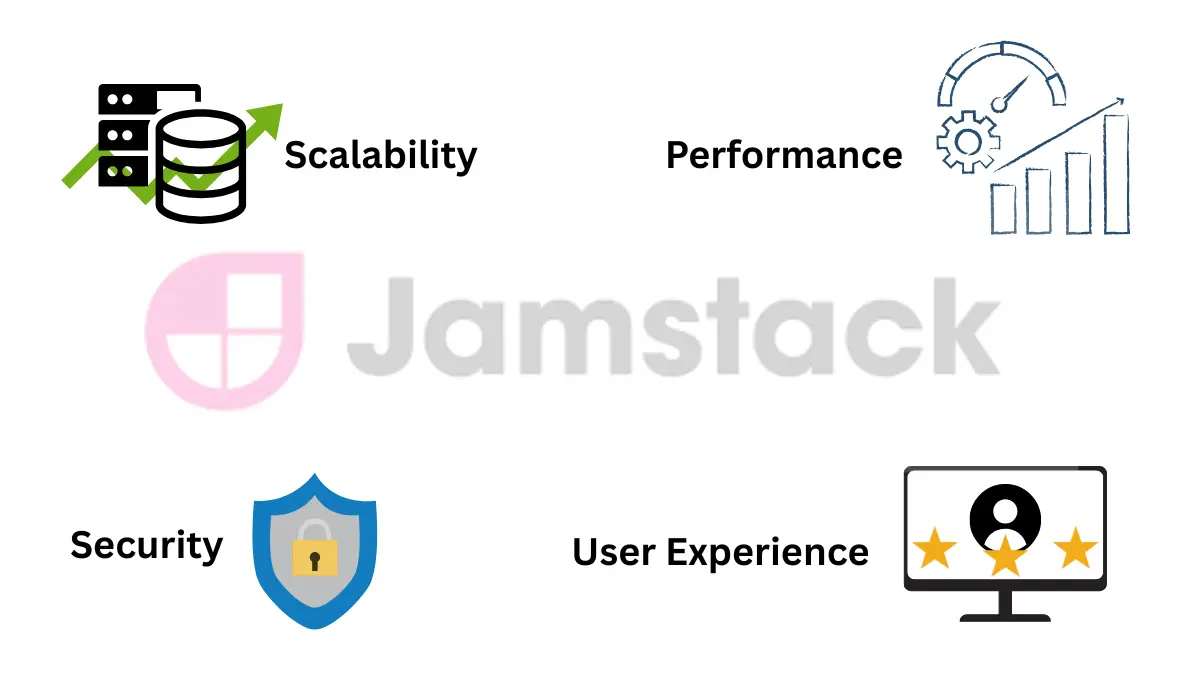
Fast Performance
Since Jamstack sites are pre-built and served from a global CDN, it means there is no server or database to query all the requests on a per-user basis. The result is pages loading in milliseconds and leads to a superior user experience. The higher conversion rates and a boost in search engine rankings are evident. That is a game-changer for sites that need to deliver content quickly to a global audience.
Enhanced Security
Separating the front end from the back end reduces your website’s attack surface. Traditional WordPress sites are a common target for hackers because they expose a public-facing database and a dynamic server-side environment. A Jamstack front end is a collection of static files and is far more resilient to threats like SQL injection and DDoS attacks. That leaves your WordPress back end safe behind a firewall.
Superior Scalability
A Jamstack site can easily handle massive traffic spikes because the content is delivered from a CDN. This means you don’t need to worry about your server or database being overwhelmed during a viral moment or a marketing campaign. You get virtually unlimited, on-demand scalability without spending on expensive infrastructure upgrades or complex load-balancing setups.
Improved Developer Experience
The Jamstack embraces modern web development practices. Developers get to use their preferred tools, frameworks, and build processes (like Git-based workflows). This freedom and flexibility lead to faster development cycles, more maintainable code, and the ability to innovate without being tied to the monolithic architecture of a traditional CMS.
Headless WordPress and Jamstack Setup: A Simple Roadmap
Forget WordPress vs Jamstack. In contrast, this roadmap outlines the key steps to begin your journey with the marriage of this couple and step toward a headless WordPress and Jamstack setup. Think of it as an overview to help you navigate the process.
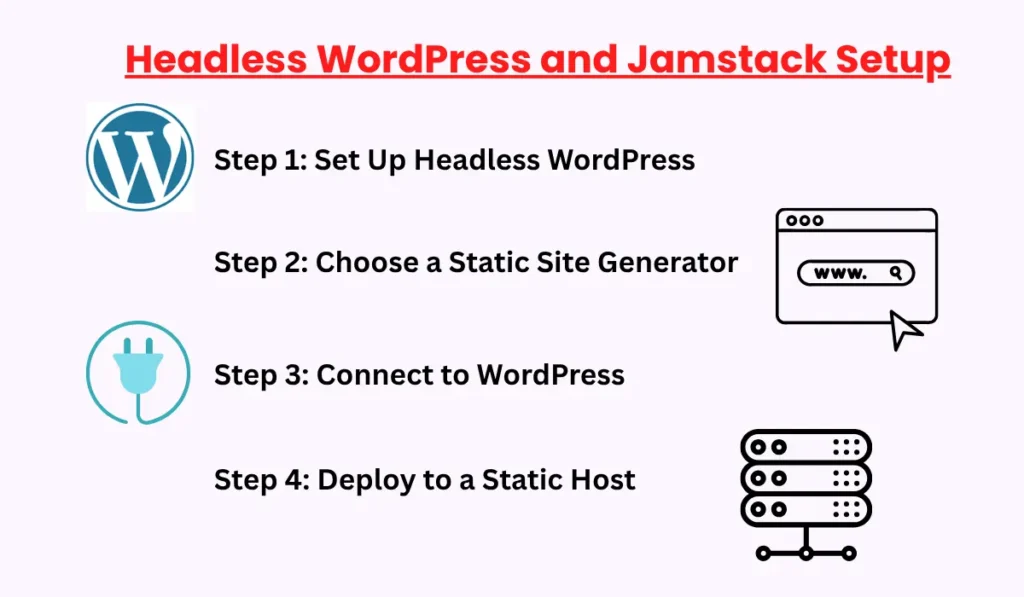
Step 1: Set Up Headless WordPress
Your first step is to configure your existing WordPress site to function as a back end. You’ll need to install a blank theme or a plugin like “Headless Mode” to disable the front end and prevent it from being viewed by the public. This ensures your content is only accessible via the API, making it more secure.
Step 2: Choose a Static Site Generator
This is the tool that will build your new front-end. Popular choices include Gatsby, Next.js, and Hugo. Each has its own strengths, but their core function is the same. They take your content from WordPress and turn it into highly optimized, static HTML files. Your choice will likely depend on your team’s familiarity with a particular framework.
Step 3: Connect to WordPress
Once you have chosen your static site generator, you’ll need to connect it to your WordPress backend. This is done by using the built-in WordPress REST API or by installing a plugin like WPGraphQL for a more powerful and efficient data retrieval method. The static site generator will use this API to fetch all your posts, pages, and other content during the build process.
Step 4: Deploy to a Static Host
The final step is to deploy your pre-built static files to a hosting provider. You should choose a service specifically designed for the Jamstack, such as Netlify, Vercel, or Cloudflare Pages. These platforms offer global CDNs, automated deployment from your Git repository, and built-in features that make managing and hosting your new site a seamless process.
After successfully setting up things, if you feel boggled while adding the contact form, read our post and simple is.
Conclusion: Is Jamstack Right for You?
Combining WordPress with the Jamstack offers a powerful path to a faster, more secure, and highly scalable website. By using WordPress as a headless CMS, you maintain its familiar content management experience while enjoying a modern front end. This provides lightning-fast performance and solid security by segregating the back end to work separately. However, this approach isn’t for everyone. It adds a layer of complexity and a new workflow, making it less suitable for dynamic sites with real-time user-generated content. If these benefits outweigh the added complexity for you, then you can start with a small project to explore the possibilities.

